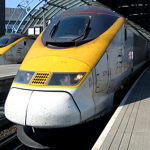InterRail provides passes to European residents for train travel in Europe. The scheme boasts major discounts on some train travel, and the freedom of hop-on, hop-off travel across the majority of European countries (see exceptions below). If you’re not a European resident, you can take a look at Eurail passes instead. You can by passes to cover a single country, or to cover the whole of Europe. However, you do need to check in advance whether or not the country and / or train you are traveling on uses reservations, as this will restrict your travel a little.
Passes aren’t valid in your country of residence, so you’ll have to make your own way from home to your first destination, and back again from your last.
Top Tips for InterRailing in Europe
- Find out which countries on your route require ticket validation at the station before you go. If you get on a train without validating your ticket you could be fined or be forced to buy a whole new ticket. In countries where tickets are validated (e.g. Italy), you will see a yellow box attached to a pillar or the wall somewhere in the train station building, usually close to or on the platforms. If you’re lucky, they’ll be dotted about all over the place. You can validate your ticket by inserting into this machine on the day you travel. Don’t worry about this if you have an InterRail pass, though as the dates will be on there already.
- Find out in advance if the train you want to get uses reservations – this is true for many trains especially high-speed and sleeper trains. Rest easy, you can make reservations as you go by popping along to the local train station where they will happily reserve you a spot on any train up to 30 days in advance. Alternatively you can book as soon as you’ve got your InterRail pass through the post by phoning the appropriate call centre for the country you’re visiting. This cost is not included in your interrail ticket, though. Often, there may be a slower route available without reservation.
- Most trains have some kind of food service, whether that be a dedicated restaurant cabin, a small kiosk or a trolley service, you can usually bank on getting some light refreshments on board. Nevertheless, it’s a good idea to stock up on some essentials before you board.
- Arrive in plenty of time – European train stations vary between countries, can be busy and large and quite disorienting. Different countries have different rules about how long before departure the doors will be locked. Turn up early and don’t be left behind!
- Some of the trains in mainland Europe are double-decker and they’re great fun!
Resources:
- The Man in Seat Sixty-One is an amazing resource for train travel around the world.
- InterRail has info and bookings for train travel around Europe
- Eurail has tickets and info for non-EU residents
- Eurostar offers bookings and info for trains between London and Paris or Brussels

